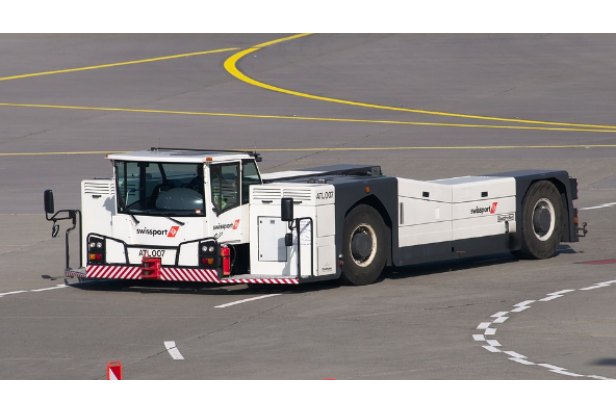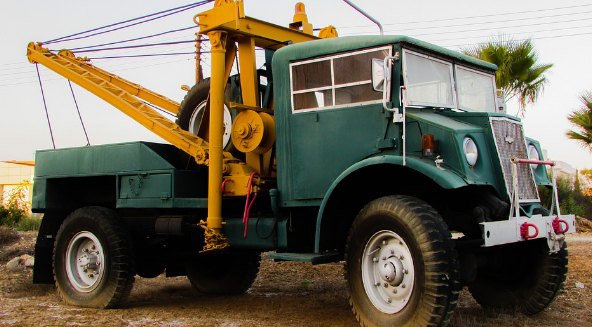
Do You Need a CDL to Drive a Tow Truck – Is It Necessary?
Do tow truck drivers require a CDL? The majority of the time, the response is affirmative. The size and weight of your vehicle and trailer affect the requirements for a commercial driver’s license. A specialized tow truck driver’s license is typically required for tow truck operators in order to operate a commercial vehicle.
CDL Levels of Certification
The four primary types of tow trucks and drivers each have three levels of certification. Tow truck drivers must keep track of their working hours and pass written tests for each level. Oral interviews in addition to written exams are frequently required for level 2 and level 3. It’s wise to earn all three certifications if you want to drive tow trucks as a career.
- Level 1 certification: You can use a hidden wheel lift if you have level 1 certification. You must have at least 90 days of towing experience and satisfy all local, state, and federal requirements to be eligible for level 1 certification.
- Level 2 certification: You must have operated a tow truck for at least a full year before applying for a level 2 certification. You must already have level 1 certification and fulfill all government requirements in order to advance to this level.
- Level 3 certification: At least two years of tow truck operating experience and a level 2 certification are prerequisites for level 3 certification. Additionally, you may need to submit a letter of recommendation and meet additional requirements.
What License is Required to Drive a Tow Truck?
Whether your car is a commercial or non-commercial car affects the license needed to operate a tow truck, among other things. Any vehicle used to transport people or things that meets certain requirements is classified as a commercial vehicle by the Federal Motor Carrier Safety Administration. As a result, you require a CDL if your tow truck fits into any of the following categories.
- Gross combined weight rating: The vehicle alone makes up more than 10,000 pounds of the gross combined weight, which exceeds 26,001 pounds.
- Cargo weight: Although the vehicle weighs more than 26,001 pounds, it cannot tow loads weighing more than 10,001 pounds.
- Passenger capacity: a vehicle that can accommodate the driver and more than 15 passengers, or if the vehicle transports hazardous materials.
Class a License
Vehicles that fall under the commercial motor vehicle category typically require a Class A license. Light-duty tow trucks are one class of vehicle that might need an A license. The T endorsement, which enables you to pull multiple trailers or vehicles with your light-duty tow truck, is required if you have a Class A CDL and intend to tow multiple vehicles at once. You will be able to carry two or three times more freight with the T endorsement, but it typically comes with an additional written test.
Class B License
For heavy-duty vehicles, such as dump trucks or other specialized vehicles, a Class B license is required. Only four-car carriers, such as service vehicles and the majority of Class 7 or Class 8 tow trucks, are typically allowed to operate tow trucks, and Class B licenses are typically only needed for these vehicles. You can also operate a Class B CDL to operate a Class C vehicle with the appropriate endorsements.
Class C License
A Class C license can be obtained for both commercial and non-commercial vehicles, but it is typically only valid for non-commercial vehicles. For instance, if the tow truck weighs under 10,000 pounds and you won’t need to tow anything that will push your weight score over 26,000 pounds, you can drive it with a non-commercial Class C license. A commercial Class C license is required if you need to transport any hazardous material that calls for a placard.
The Four Main Types of Tow Truck
The four main types of tow truck that modern towing companies use are as follows:
- Rollback/Flatbed Truck
A flat-topped empty bed is present at the back of the flatbed truck, which is made to transport vehicles on top of it. To raise or lower the flatbed, they use hydraulics.
They are commonly seen on roads and highways and are reasonably simple to operate.
- Integrated Tow Truck
Specialized vehicles called integrated tow trucks are made to help with the recovery and towing of big vehicles like buses or trucks.
They are well-liked for moving cars for repossession because they are simple to hook up to other vehicles.
A wheel lift and boom are frequently combined into one unit on an integrated truck. A third axle is also present.
The additional axle enables the integrated tow truck to withstand the increased pressure that is applied when towing larger vehicles.
- Hook and Chain Tow Truck
A hook and chain tow truck is frequently used for the removal of abandoned vehicles. These trucks have a heavy-duty hook and chain attached to the rear, as the name would imply.
The attached vehicle is essentially dragged behind the hook and chain truck, which can occasionally harm the object being towed.
- Wheel Lift Tow Truck
A Wheel Lift Tow Truck, as opposed to a Hook and Chain Tow Truck, uses a metal yoke positioned beneath the front or rear wheels of the vehicle.
Once the metal yoke is secured, the truck raises the towed vehicle in the air behind the wheel lift truck using a pneumatic hoist or hydraulic lift.

Do You Need Tow Truck Driver’s Endorsements?
In addition to a CDL, endorsements may limit the kind of vehicle you can drive or the amount of cargo your tow truck can haul. Depending on the kind of work a driver plans to do, they may need to apply for particular endorsements when applying for a CDL. Understanding CDL endorsements is crucial when figuring out what it takes to become a tow truck driver.
- H endorsement: With the H endorsement, also referred to as the HAZMAT endorsement, you are permitted to drive a car that has hazardous materials inside. You must pass an exam demonstrating your proficiency in handling hazardous materials safely in order to receive an H endorsement.
- N endorsement: You can transport a tank or a tanker of liquid or gaseous materials if you have an N endorsement, also known as the tank endorsement. The act of driving with a tank full of material that moves and distributes its weight differently requires drivers with an N endorsement to adapt.
- P endorsement: Drivers who want to operate a vehicle that can carry more than 16 passengers must have the P endorsement, also known as the passenger endorsement. There are additional knowledge and skill tests needed for a P endorsement.
- S endorsement: The S endorsement, also referred to as the school bus endorsement, is required if you intend to operate a school bus carrying children. The S endorsement frequently calls for a background check, other types of testing, and evaluations in addition to the written test.
- T endorsement: A T endorsement enables you to drive a truck with two or three trailers. You can transport more freight in a single trip by towing more than one trailer at once.
- X endorsement: You can transport large loads of hazardous materials in their liquid or gaseous states if you have the X endorsement. The majority of the time, obtaining an X endorsement requires having an H endorsement first.
Possible CDL Restrictions
With a CDL endorsement, you can drive additional kinds of vehicles or transport particular types of cargo. However, using certain types of machinery or vehicles may be restricted by CDL regulations. Any road test you take should be done in the same vehicle you plan to use to obtain a CDL in order to avoid any potential restrictions.
- E restriction: You are not permitted to operate a vehicle with a manual transmission while under the E restriction.
- L restriction: You cannot drive a car with a full air brake system if it has an L restriction.
- M restriction: A Class B or Class C passenger car or school bus may be operated if there is an M restriction. You cannot operate a Class A car or school bus if you have an M restriction.
- N restriction: But if you have an N restriction, you can’t drive a Class B car or a school bus. You are only permitted to drive a Class C passenger car or school bus when you have an N restriction.
- O restriction: The O restriction prohibits drivers from operating a Class A vehicle with a fifth-wheel connection.
- V restriction: If the license holder has disclosed a medical variance, the restriction will be marked with a V. Diabetes, hearing problems, vision problems, or seizures are a few common conditions that might necessitate a V restriction.
- Z restriction: Similar to the L restriction, the Z restriction forbids driving a car with fully inflated brakes. It’s possible that the Z restriction would be imposed on you if you took the road test in a car with air brakes rather than hydraulic brakes.
Conclusion
We’ve covered the important topic of whether a CDL is required to operate a tow truck in this article.
It is crucial that you obtain the appropriate insurance for your car and your driving privileges.
FAQs
Do You Need a CDL to Drive a Flat Bed Tow Truck
The tow truck and the vehicle it tows are treated equally for CDL requirements, just like any other powered unit towing a non-powered unit. The driver requires a Class A CDL if the tow truck’s GCWR is 26,001 pounds or more and the combined GVWR of the towed vehicle alone exceeds 10,000 pounds.
What Kind of License Do You Need to Drive a Tow Truck
If the GVWR of the tow truck alone is 26,001 pounds or more, and the driver either (a) drives the tow truck without a vehicle in tow, or (b) drives the tow truck with a towed vehicle of 10,000 pounds or less GVWR, then the driver needs a Class B CDL.
Can You Drive a Tow Truck With a Class C License
A driver of a tow truck or towing configuration that does not fit either configuration description above requires a Class C CDL only if he or she tows a vehicle required to be placarded for HM on a “subsequent move,” i.e., after the initial movement of the disabled vehicle to the nearest storage or repair facility.



Average Rating